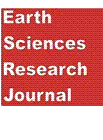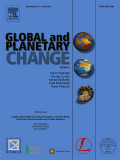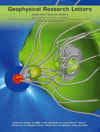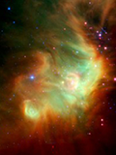
AGU Advances
Scope & Guideline
Transforming Ideas into Impactful Research
Introduction
Aims and Scopes
- Interdisciplinary Research:
The journal encourages contributions that bridge multiple disciplines within Earth and space sciences, fostering collaboration and integration of knowledge across fields such as geology, meteorology, oceanography, and environmental science. - Climate Change and Environmental Impact Studies:
A significant focus on climate change, including its impacts on ecosystems, carbon cycles, and weather patterns, reflects the journal's commitment to addressing urgent environmental issues and promoting sustainable practices. - Geophysical and Geological Investigations:
Research on geophysical phenomena, including seismic activities, mantle dynamics, and tectonic processes, forms a core part of the journal's scope, enhancing our understanding of Earth's physical processes. - Remote Sensing and Observational Sciences:
The journal highlights advancements in satellite and remote sensing technologies that contribute to environmental monitoring, climate studies, and geospatial analysis, demonstrating the importance of observational data in Earth sciences. - Astrobiology and Planetary Sciences:
Research exploring planetary environments, astrobiological potential, and extraterrestrial geology is integral to the journal, showcasing its commitment to understanding not only Earth but also other celestial bodies.
Trending and Emerging
- Climate Feedback Mechanisms:
Recent publications increasingly explore the feedback mechanisms between climate variables and ecosystems, emphasizing the complex interactions that affect carbon cycles, hydrology, and weather patterns. - Urban Climate and Sustainability:
The rise in studies addressing urban environments and their impact on climate change indicates a growing recognition of the need for sustainable practices in urban planning and development. - Anthropogenic Effects on Natural Systems:
Research increasingly focuses on the impacts of human activities on natural systems, including land use changes, carbon emissions, and environmental degradation, reflecting a critical need for understanding anthropogenic influences. - Technological Innovations in Earth Observation:
Emerging themes include the use of advanced technologies for Earth observation, such as machine learning and remote sensing, which enhance our ability to monitor and model environmental changes effectively. - Ecosystem Responses to Climate Variability:
There is a notable trend towards investigating how ecosystems respond to climate variability and extreme weather events, highlighting the importance of ecological resilience and adaptation strategies.
Declining or Waning
- Traditional Geology and Stratigraphy:
There has been a noticeable decrease in publications focused solely on traditional geological methods and stratigraphic studies, as interdisciplinary approaches gain traction and the need for broader environmental contexts becomes more apparent. - Localized Environmental Studies:
Research centered on localized environmental issues may be waning, potentially overshadowed by studies emphasizing global perspectives on climate change and its multifaceted impacts. - Historical Climate Reconstructions:
While historical climate studies remain important, there is a trend towards more immediate and predictive climate modeling, which may lead to a reduced focus on purely historical reconstructions.
Similar Journals

Journal of Asian Earth Sciences-X
Advancing Knowledge in Earth and Planetary SciencesJournal of Asian Earth Sciences-X, a distinguished publication by ELSEVIER, is at the forefront of Earth and planetary sciences, particularly focusing on the dynamic fields of geology and earth-surface processes. As an Open Access journal since 2019, it provides unparalleled access to high-quality research, fostering global collaboration and dissemination of knowledge. With an impressive impact factor and ranking in the Q2 category for both Earth-Surface Processes and Geology, it serves as a crucial platform for researchers, professionals, and students alike to share their findings and insights. Situated in the United Kingdom, the journal thrives on contributions that enhance our understanding of Asian geosciences within a broader global context, aiming to tackle major challenges such as climate change and natural resource management. By bridging regional studies with global perspectives, the Journal of Asian Earth Sciences-X is not only a vital resource for academia but also supports sustainable development initiatives across the region.

Earth Sciences Research Journal
Unveiling Insights into Earth’s MysteriesThe Earth Sciences Research Journal, published by the UNIV NACIONAL DE COLOMBIA, serves as a pivotal platform for the dissemination of knowledge in the diverse field of Earth and Planetary Sciences since its inception. With an ISSN of 1794-6190 and an E-ISSN of 2339-3459, this Open Access journal has been committed to providing unrestricted access to high-quality research since 2004. Located in Bogotá, Colombia, it has gained recognition within the academic community, achieving a Q3 quartile ranking in Earth and Planetary Sciences and notable Scopus rankings, which further underscores its relevance and reach. Its scope encompasses varied research topics, making it an essential resource for researchers, professionals, and students alike, seeking to contribute to or stay informed on the latest developments in the Earth sciences up to the year 2024. The journal not only anticipates cutting-edge research but also emphasizes collaborative dialogues among global experts, driving forward the conversation on critical issues facing our planet.

GLOBAL AND PLANETARY CHANGE
Illuminating the Path to Global Environmental SolutionsGLOBAL AND PLANETARY CHANGE, published by Elsevier, is a premier international journal focused on the critical issues surrounding environmental science, climate change, and planetary dynamics. Since its inception in 1989, this journal has established itself as a leading voice in the field, currently holding a prestigious Q1 ranking in both Global and Planetary Change and Oceanography as of 2023. With a remarkable influence reflected in its Scopus rankings—15th in Earth and Planetary Sciences and 34th in Global and Planetary Change—it serves as an essential platform for researchers, professionals, and students. The journal provides a comprehensive examination of cutting-edge research findings and innovative developments that address the urgent challenges facing our planet. Although it is not an Open Access journal, it remains a vital resource for anyone keen to contribute to or stay informed on the ever-evolving discourse of global environmental change, promoting sustainable solutions for the future.

INTERNATIONAL JOURNAL OF EARTH SCIENCES
Innovating Earth Science Research for TomorrowINTERNATIONAL JOURNAL OF EARTH SCIENCES, published by Springer, is a leading journal in the field of Earth and Planetary Sciences, distinguished by its Q1 quartile ranking in the 2023 category of Earth and Planetary Sciences (miscellaneous). With an ISSN of 1437-3254 and an E-ISSN of 1437-3262, this journal has been a pivotal platform for researchers, academics, and practitioners since its inception in 1996. The journal's focus encompasses a broad range of topics within Earth sciences, making it a vital resource for contributions that enhance our understanding of geological processes, climate change, and planetary dynamics. The impact factor reflects its high standards and the significance of the research it publishes, ranking it in the 74th percentile among its peers as per Scopus. Furthermore, the journal offers Open Access options, facilitating the global dissemination of groundbreaking research. The editorial team is committed to advancing knowledge in Earth sciences, serving as an essential reference for students and professionals looking to engage deeply with this dynamic field.

GEOPHYSICAL RESEARCH LETTERS
Pioneering Research in Earth and Planetary Sciences.GEOPHYSICAL RESEARCH LETTERS is a renowned academic journal published by the American Geophysical Union that plays a pivotal role in advancing the field of Earth and Planetary Sciences. Established in 1974, this esteemed journal provides a platform for the latest research and innovations in geophysics, including but not limited to, solid earth, atmospheric sciences, and oceanography. With its impressive ranking of #7 out of 165 in Geophysics and #13 out of 195 in General Earth and Planetary Sciences according to Scopus, and being categorized in the Q1 quartile for both fields in 2023, it is a leading choice for academic and professional researchers alike. While GEOPHYSICAL RESEARCH LETTERS does not currently offer open access, it remains committed to disseminating high-quality, peer-reviewed scientific literature. With ongoing contributions expected through to 2024, this journal is essential for those who seek to deepen their understanding and engage with cutting-edge developments in geophysical research. Its influence and reach underscore its significance in shaping the future of geophysical inquiry.

Annual Review of Earth and Planetary Sciences
Exploring the Frontiers of Earth and BeyondAnnual Review of Earth and Planetary Sciences is a leading scholarly journal published by Annual Reviews, dedicated to advancing our understanding of the dynamic processes governing the Earth and its celestial companions. With ISSN 0084-6597 and E-ISSN 1545-4495, this esteemed journal, established in 1976, has consistently provided comprehensive reviews that synthesize cutting-edge research across various disciplines, including astronomy, astrobiology, geology, and planetary science. Notably, the journal has achieved a remarkable position in the academic landscape, ranking in the Q1 quartile across multiple categories, including Astronomy and Astrophysics and Earth and Planetary Sciences, with Scopus rankings placing it at the forefront of these fields. The journal's commitment to facilitating open access to critical scientific advances, though not fully open, allows for maximum reach within the research community. Researchers, professionals, and students alike can benefit from the high-impact articles designed to foster collaboration and innovation within the fields of earth and planetary science.

Earth and Space Science
Championing Open Access for Earth and Space Innovations.Earth and Space Science, published by the American Geophysical Union, is a distinguished open-access journal that has profoundly impacted the realms of earth and planetary sciences as well as environmental science since its inception in 2014. With impressive rankings, including Q1 in both Earth and Planetary Sciences and Environmental Science for 2023, this journal ranks 38th out of 195 in the general Earth and planetary sciences category and 51st out of 219 in environmental science, showcasing its commitment to high-quality research dissemination. The journal serves as a vital platform for researchers, professionals, and students, fostering the exploration of critical topics and advancements within these pivotal fields. With an accessible format, researchers can benefit from the rich content available, furthering their knowledge and ensuring that groundbreaking discoveries reach a broader audience. The journal's ongoing commitment to open access aligns with contemporary trends in scholarly communication, emphasizing inclusion and collaboration in tackling pressing global challenges.

China Geology
Your Gateway to Cutting-Edge Geological ResearchChina Geology, published by KEAI PUBLISHING LTD, is a leading open-access journal that serves as a pivotal platform for disseminating high-quality research across a wide spectrum of Earth sciences. Since its inception in 2018, the journal has rapidly established itself with an impressive Q1 ranking in multiple critical categories, including Geology, Economic Geology, and Oceanography, among others, reflecting its significant contribution to the academic community. Positioned as a top-tier journal in the Earth Planetary Sciences domain, it ranks #22 out of 321 in Geology and exhibits an admirable impact in sub-fields such as Earth-Surface Processes and Geochemistry and Petrology. China Geology is committed to promoting rigorous scientific inquiry and facilitating the open exchange of knowledge in the geosciences, making it an essential resource for researchers, professionals, and students eager to explore innovative developments and fundamental advances in geology. The journal’s accessibility ensures that critical findings reach a broad audience, thereby enhancing collaboration and driving forward scientific discourse in the global community.

Geosciences
Uncovering Geological Insights for a Sustainable Future.Geosciences is a prestigious open-access journal published by MDPI, dedicated to advancing research in the field of Earth and Planetary Sciences. Since its inception in 2011, this journal has fostered a collaborative environment for the dissemination of innovative ideas and findings, contributing significantly to the academic community's understanding of complex geological processes. The journal has achieved a commendable 2023 ranking in the second quartile (Q2) within its category, highlighting its impact and relevance in the field, with a Scopus rank of #41 out of 195 journals, placing it in the 79th percentile. With an aim to span a broad range of topics from environmental geology to planetary exploration, Geosciences is pivotal for researchers, professionals, and students looking for an accessible platform to share their work and stay informed of the latest developments. As a fully open-access journal, it ensures that high-quality research is freely available, fostering greater dissemination of knowledge across the globe.

Geosphere
Illuminating the Path of Geological Discovery and CollaborationGeosphere is a premier open access journal published by the Geological Society of America, Inc., dedicated to advancing the fields of geology and stratigraphy. Since its inception in 2005, this journal has established itself as a critical platform for sharing high-quality research, evidenced by its robust positioning in the 2023 Scopus rankings, where it holds the 12th rank in stratigraphy and 75th in geology. With an impressive impact factor and a commitment to open access since 2018, Geosphere facilitates the dissemination of significant findings to a global audience, making it an essential resource for researchers, professionals, and students alike. The journal's scope includes a wide range of topics related to Earth and Planetary Sciences, encouraging interdisciplinary collaboration and innovation. Based in the United States, Geosphere continues to foster a community dedicated to understanding the Earth's processes and resources, ensuring that it remains at the forefront of geological research.